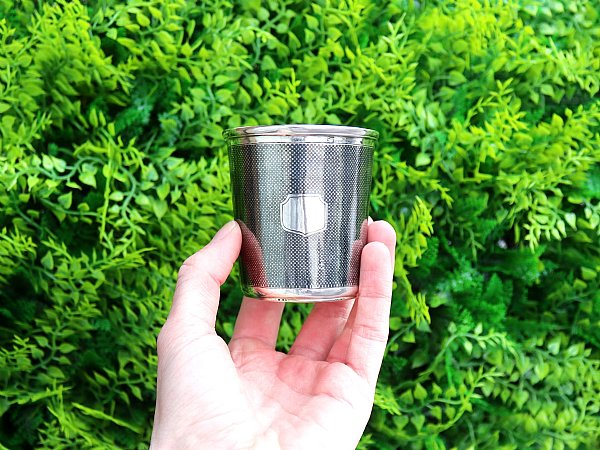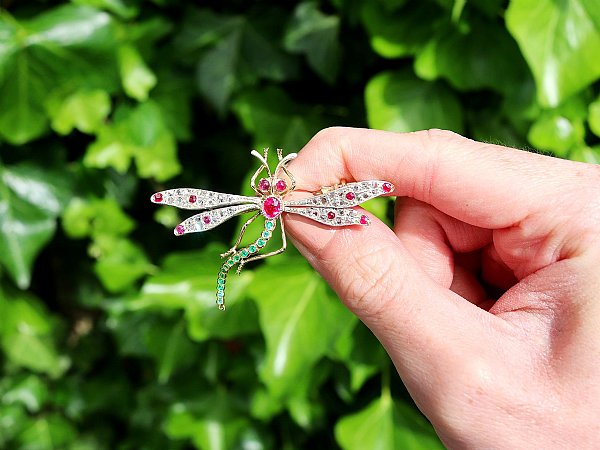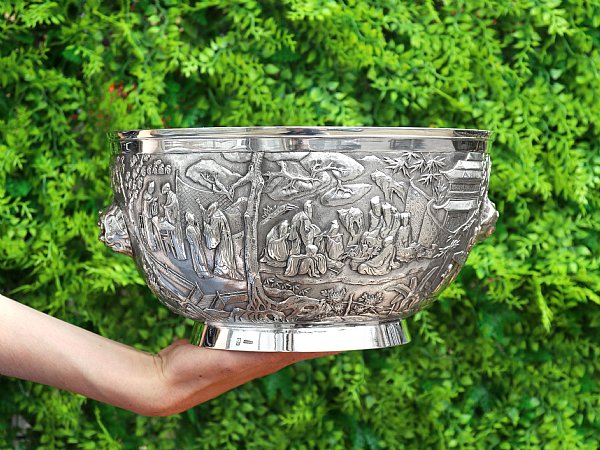Search Results for: '{{searchText}}'
Sorry...
We don't seem to have what you're looking for.
However we do have thousands of magnificent pieces of silver and jewellery available for you to view online. Browse our store using one of these categories.
Please wait for loading data... 
AC have an exceptional variety of vintage and antique silver beakers, ranging from collapsible beakers used for travelling to fine enamel Russian silver beakers.
The impressive range of beakers and tumblers covers examples from many periods including the Georgian, Edwardian and Victorian eras, through to more modern vintage and contemporary times.
Andrew Campbell hand picks all items added to AC Silver’s inventory. The selection is comprised of exceptional examples of antique silver, all of which are the finest of their type.
All of the beakers at AC Silver come with free and insured worldwide shipping and a 14 day return policy.

Beaker is the word traditionally used for a flat based vessel, rather than a bowl with a stem base such as a goblet, chalice or cup. Beakers also usually forgo handles or a lid, and have a basic cylindrical form.
The term beaker may be derived from the Greek ‘bikos’ (earthenware jug), German ‘beker’, or Old Norse ‘bikarr’.
Beakers are very similar in shape and style to what is now commonly referred to as a tumbler, as they maintain the same cylindrical form, with the opening which is drunk from being slightly wider than the base.
A tumbler is a stem-less, often flat-bottomed drinking vessel, which is typically taller than 3 inches, and has no handle.
It would seem that the word ‘tumbler’ has been in circulation since the 17th Century. Initially, it was used to describe a metal cup with a round bottom. When the tumblers were placed on the table, they would ‘tumble’ around, due to the rounded bottom. It has been suggested that this was an intentional practice in order to sell more alcohol, as the drinker couldn’t put the tumbler down until they had finished their drink. However, it is more likely that this intentional rounded base was instead crafted to aid with travelling. The rounded base of a tumbler meant that during a journey in a coach or (later) train, the cups would maintain their balance.
Many types and styles of beaker have been discovered across Europe from as early as Copper Age (4300 BC - 3200 BC) and the Bronze Age (2500 – 600 BC), many of which still resemble a similar form to much later antique Stuart and Georgian beakers, which are scarce but still available to collectors.
Owing to the abundance of these types of vessels dating around the 14th century, it has been deduced that within Europe, the beaker was the most commonly used type of drinking vessel, no surprise when considering its simplistic and practical design.
By the 16th century glass manufacturing processes became more refined, and its versatility had a great impact on the production of drinking vessels of all shapes and sizes. This in turn reduced the demand, and hence production, of the humble beaker.
During the Georgian, Victorian and Edwardian eras, beakers were often used by those who travelled, as they were easier to transport and a more sturdy shape than vessels such as goblets, whose weaker stems would likely be damaged from being packed away over long journeys.
Throughout the 17th and 18th Centuries, the silver tumbler was a very popular item in both Britain and America. It has even been recorded that Samuel Pepys bought a pair in 1664 – a testament to their popularity.
Flat-bottomed cups, crafted in the 17th and 18th Centuries, which are typically taller than tumbler cups, are less common. Having said that, there are still some examples from around this time (1780s and 1790s), of bright cut engraved cups, which were crafted and produced predominately by the Bateman family.
Victorian beakers are the most common. They were typically designed as presentation cups or beakers, often with inscriptions on them to mark a special occasion.
Today, novelty cups and tumblers, such as collapsible beakers, are the most desirable pieces; as well as pieces designed for children.
Smaller beakers often originated in China and the Far East, due to the strength of the favoured alcohol in these regions. Antique beakers from Europe would often be used to consume beer and wine, these smaller beakers would be intended for grain alcohol; therefore, less volume of this beverage would be required.
Much early antique silverware featured little if any decoration or detail, early beakers often being completely devoid of any embellishment. The shape and style of the beaker have evolved over time. Early examples are often tall, featuring a spreading foot. As time went by the beaker grew short and squatter in form, with gradually less ornament.
Some of the earliest forms of English beakers originate from the 17th century, during the reigns of James I (and IV of Scotland) and Charles I. These types were known as Stuart beakers. Stuart beakers were normally crafted in a tall cylindrical form, often with engraved floral design.
During the 18th century, it became more common to have a family crest or monogram engraved into your silverware; this rapidly developed into a trend for more lavish and bold styles of silverware decoration. Advances in silverware decorative techniques allowed for more complex methods of embellishment and this married with the fashionable Victorian desire for design featuring extravagant and florid detailing.
Beakers were also created for use when travelling; compact, easily transportable and known as the collapsible beaker. These beakers are comprised of concentric bands of silver which fit neatly into each other, and so can be expanded and compacted at will – making it the perfect travelling companion!
Beakers in silver, gold and featuring decoration such as engraving or enamel work are common all around the world, although were particularly prevalent in the late nineteenth and early twentieth century in Russia.




